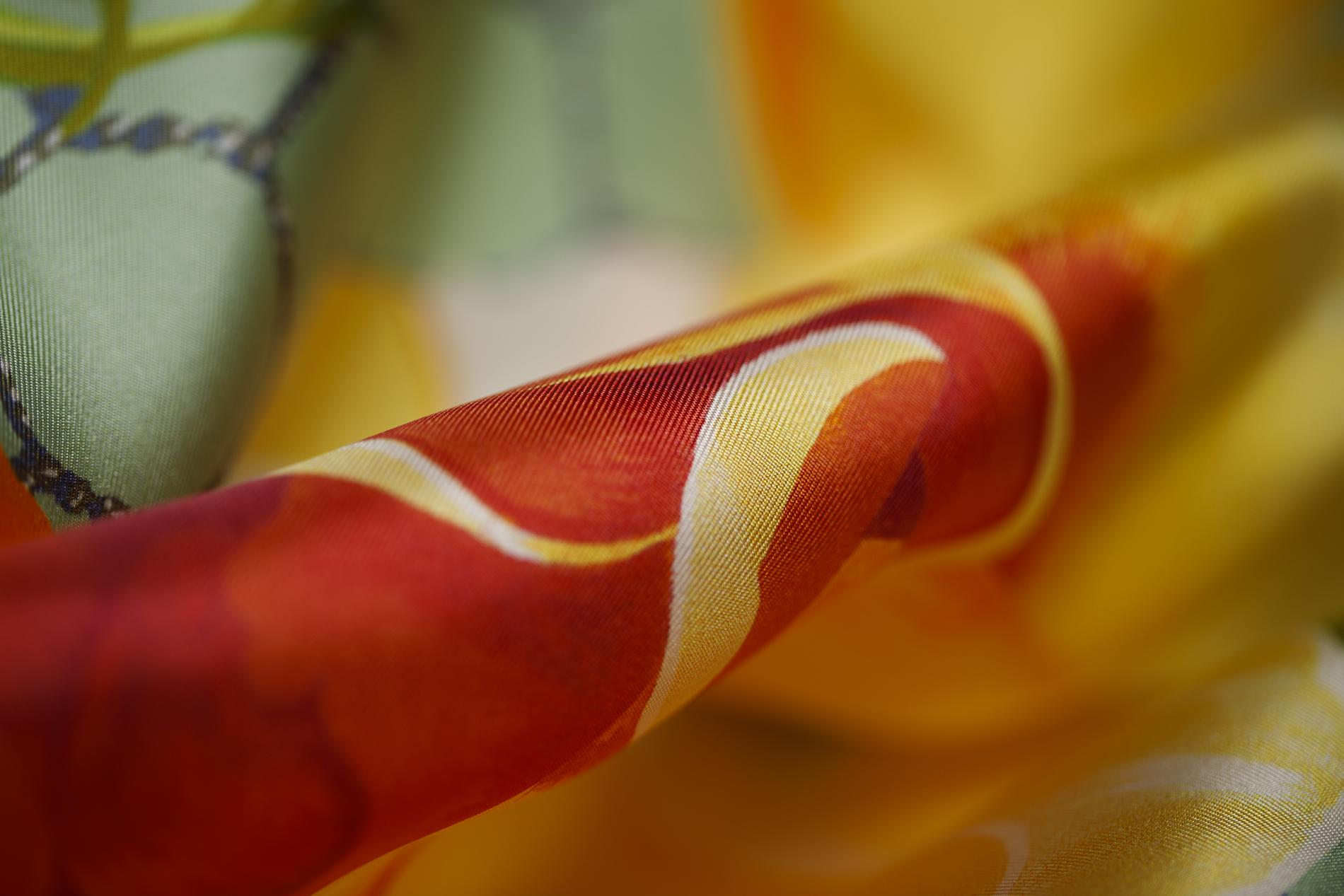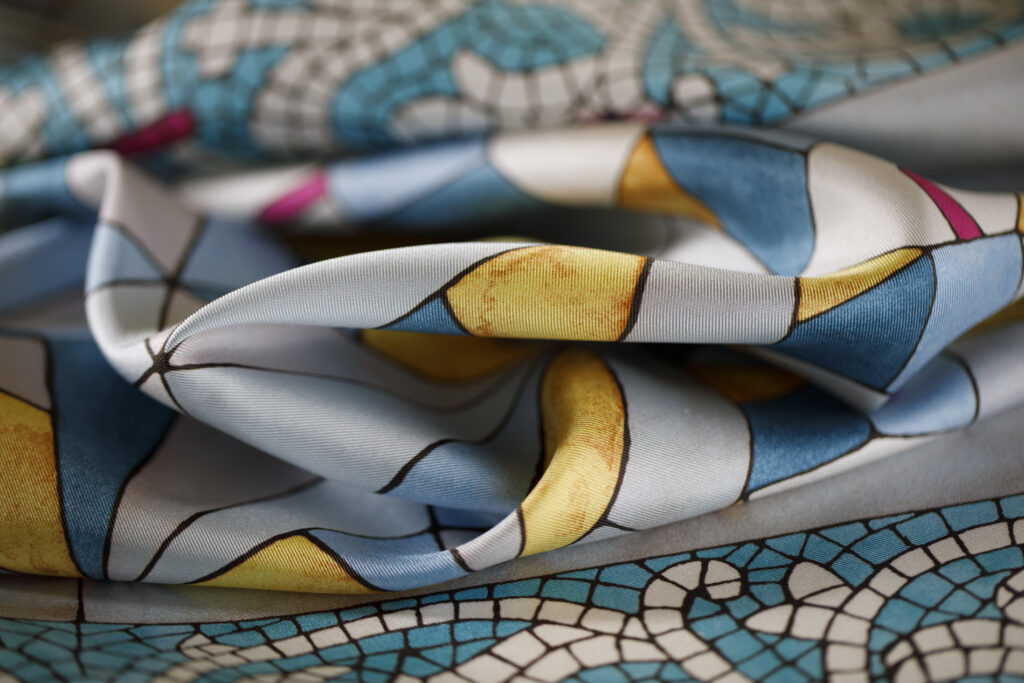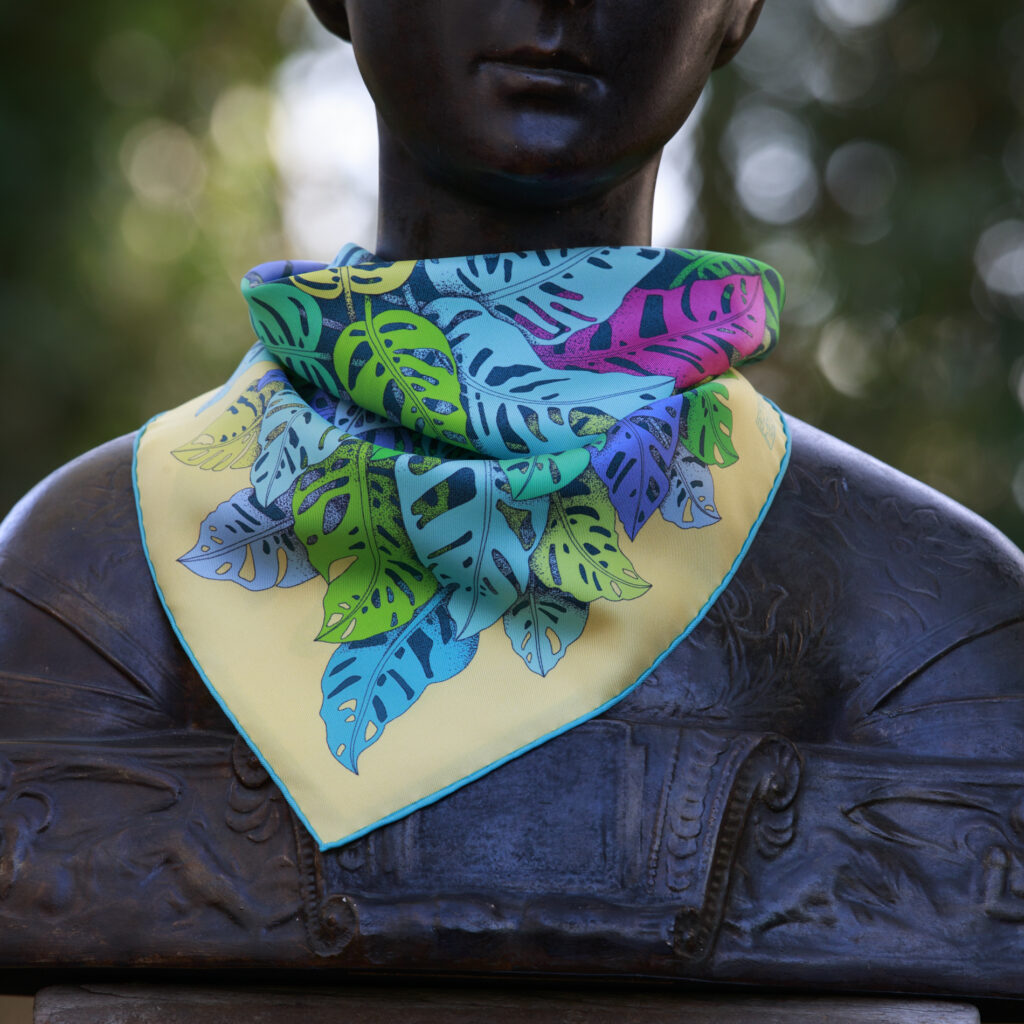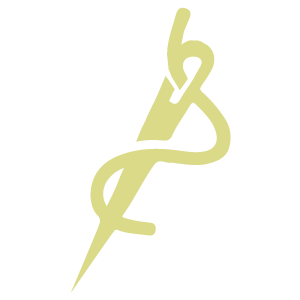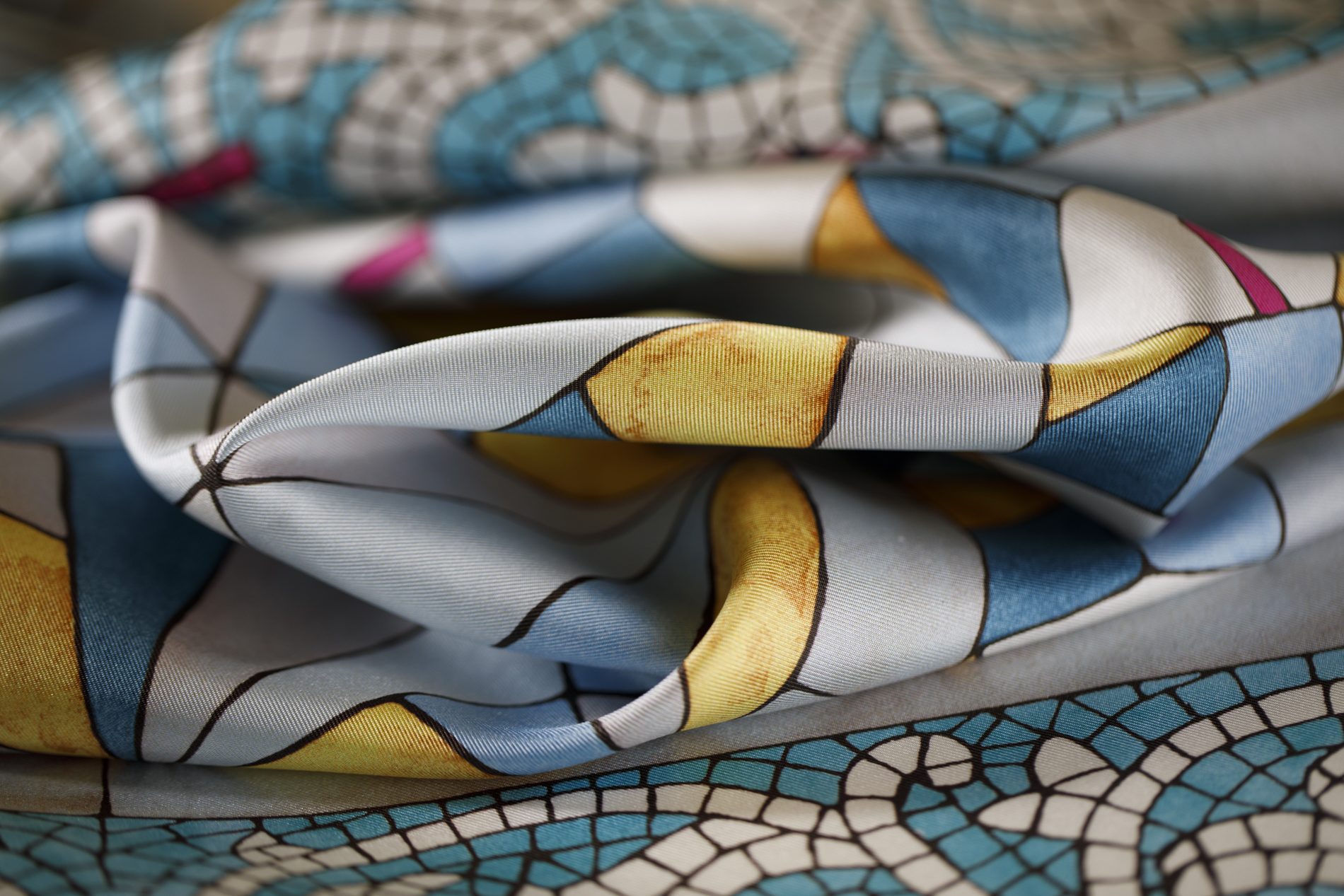
Do you dream of buying a silk scarf? But what do you need to know to choose a quality scarf that will last over time? Here are three criteria that will help you find your way :
The silk
the weave of its weaving, i.e. the way the threads cross each other on the loom. The most common weave is plain weave with basic orthogonal crossings of the threads one by one. Fine silks are often plain weaves and have a lower basis weight. The thicker texture of twill weave which draws fine diagonal stripes at 45° is silk twill. Stronger, shinier and softer, it does not wrinkle and is the basis for a quality scarf. If the weight of this twill is greater than 60 grams per square metre, you will feel the volume in your hands when you touch it and you will know that you are holding a quality silk.
The print
The design of a scarf is important, but it must also be well printed.
Silk is a material which, because of the fineness of its threads, causes the inks to fuse and the definition of the design to be altered. The quality of the print is therefore determined by the sharpness of the motifs, which must not “drool” on the edges of the design. On the other hand, the silk must make the colours sing. If a design is dull and lacks brilliance, the printing has not been done with sufficient care.
Good printing allows the front and back of a scarf to have roughly the same contrast, the front may be a little lighter.
You will also recognise a poorer print quality if you cannot fold your scarf squarely, with the edges parallel to each other, because the fabric is skewed.
The finishing touch
The first finish after printing is the finishing process. The silk receives a preparation which will make it more or less fluid. A very fluid silk is not pleasant to wear because the scarf is crushed and tends to slip.
The second finish is the hem. A quality scarf is hemmed by skilled hands, but never by a machine that tends to pull the threads.
The roulotté is the hem dedicated to silk scarves. The edge of the fabric forms a small, tight roll held together by regular stitches with an invisible thread. It can be found on the top of the scarf, it is the French roulotté or on the bottom, like any classic hem, it is the Italian roulotté.

